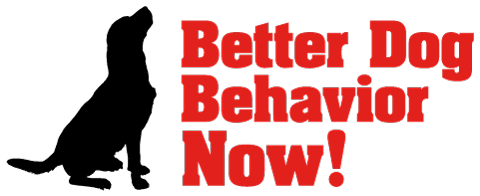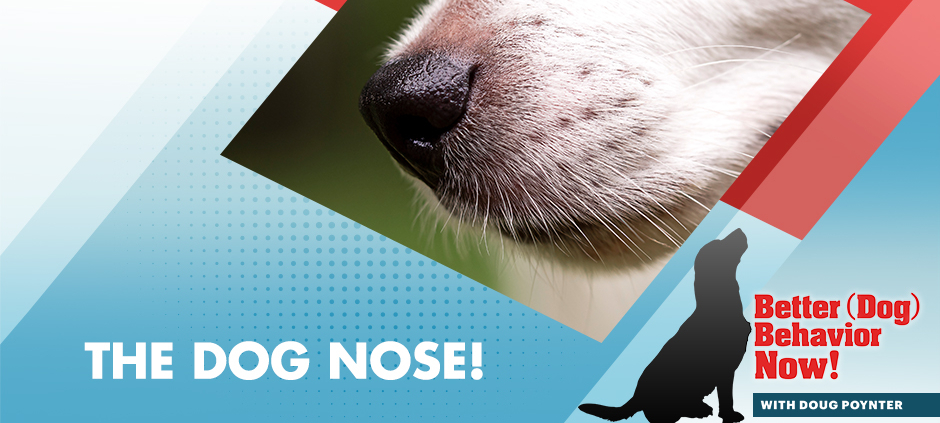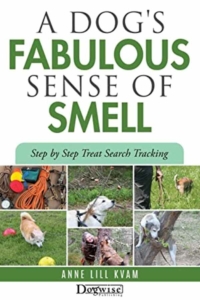The Dog Nose!
If your dog is acting disobedient, don’t punish them. Give them treats instead. The “search for treats” exercise will get your dog back into its natural instinct of finding and searching for food. This is the best exercise to get them to work and exercise. Like children, dogs have so much energy that if not spent, they get restless. Join Doug Poynter as he talks about the “search for treats” exercise and how you can do it with your dog. Tune in and start building a great owner-dog relationship right now.
—
Listen to the podcast here
The Dog Nose!
I have had clients all over the world in Nicaragua. I have had clients in Armenia, Southern California, and Atlanta. I’m not driving to these folks. Those meetings are done on Zoom and I do Zoom meetings with folks quite a bit. You could say I service the world. I do dog training. I solve canine behavior problems. I work with dogs that have got issues and dogs with behavior problems. I work with aggressive and fearful dogs. I work with dogs that have got separation anxiety.
I do dog obedience training. I do marker and clicker training. I use positive reinforcement for my training. If you’ve heard any of my previous episodes, my stance on that. There’s an episode you may want to read to called The Magic Of Markers and another one about corrections. You know what my stance is on positive reinforcement. That’s what I use.
Correction
That’s the best way I have found to train dogs and the best way I have found to solve behavior problems. A lot of people want to go out and correct the behavior problem, and what that normally means is punishment. It doesn’t work, folks. I always say that I’m not going to use a correction. The only reason I would ever use a correction is if I can’t think of an exercise that I can teach the dog that would preclude the dog from doing the bad behavior.
It takes more work. It’s a whole lot easier to pop a dog with a leash or do something aversive or punishment-wise to a dog. I get it. It’s easier and faster. It’s a shortcut. It’s lazy. It takes more work to figure out an exercise to teach your dog that would keep your dog from exhibiting the behavior you don’t want.
I will give you an example. My dog jumps on me. I hear that one all the time. “My dog jumps on me. What do I do?” I had mentioned in an earlier episode that I had been in a forum that had gone in and seen an online forum where folks were sending questions to a relatively famous organization of trainers. One of the questions was, “My dog jumps on me. What do I do?”
The person who was running the forum, a trainer, responded back with all kinds of corrective measures. Hold the dog’s paw, step on its back feet, knee it, and all the standard old-school things. It was an online form so you could comment. I entered a comment. I said, “Why don’t you teach the dog to sit as it runs up to you?”
That’s all I said. I got no comments on it. I got no one telling me I was crazy. I got no response at all, but I found something very interesting the next week or maybe it was a month later. Sometime later and not too far in the future, somebody else mentioned a similar problem with his or her dog. The same trainer came back and wrote an explanation about, “Why don’t you teach the dog to sit as the dog runs up to you?”
To this trainer’s credit, I said, “Okay.” She’s changing her stance on some things. Maybe I jog something in her mind. It’s so easy to feel like we need to punish a dog if it’s doing the wrong thing, and the reality of that is that it takes something out of the dog. It takes something out of our relationship with the dog because they begin to associate negative things with you, the one who dealt the punishment, negative things with the association or negative association with the circumstance in which it was delivered, or sometimes even the location in which it was delivered.
It's easy to punish a dog for doing the wrong thing, but the reality is that you're taking something out of your relationship with your dog. Click To TweetI had a client one time with a Bull Terrier who was scared to go near the trash can in their backyard because they zapped him with the eCollar for something that he did “wrong” to correct it. Instead of correcting the behavior, they made the dog scared of the trash can in the backyard because that’s where the dog was when he got zapped with eCollar. The association was that something was bad about that trash can. “The last time I was near this trash can, something bad happened to me.”
The way I’d look at it, positive reinforcement is the best. I’m not going to do a correction if I can think of an exercise that can change the bad behavior or preclude the bad behavior from occurring. That business of jumping up on people, teach the dog to sit. The dog runs up to you and the dog learns how to sit in front of you. Teach the dog to sit, separate from the dog running up to you, and then after the dog learns how to sit, go back and read my episode on marker training called The Magic Of Markers, so you can get an idea of how you can do that.
Teach the dog to sit and separate from the scenario, that’s the problem. After the dog knows how to sit reliably and is rewarded for that each time, then add the next piece to it, which is to walk across the room or yard and call the dog. Get the dog excited as it comes running to you. Tell it to sit. When it sits, reward it. You do that over and over and over again, and pretty soon, the dog learns how to sit when it comes running up to you.
It’s not difficult but it takes more thought and it takes more time than popping the dog with the leash or kneeing the dog in the chest. By the way, popping the dog with the leash and kneeing the dog in the chest doesn’t help anything. It doesn’t teach the dog not to jump. I have seen dogs that will continue to jump on folks because they think it’s a game or where it irritates the dog, and now we have got another behavioral problem.
This is my philosophy on it. I’m going to spend my time trying to figure out a way that I can teach the dog the behavior that we want in a way that’s positive and affirming for the dog and builds the relationship with the owner. What’s funny is, on a deeper level, most owners get that because most of the clients that I get have come from another training scenario or situation with another training method that relied heavily on corrections or aversives.
The owners, who have these dogs, don’t ever associate. That’s part of the problem. I don’t want to say a hostile environment, but it almost is. That scenario where the dog is getting punished is making things worse. When I start working with them and we start working on positive reinforcement, I start doing the marker and clicker training, and they see the dog brighten up and get happy.
They see how quickly the dog learns what we are trying to teach the dog, then they will start telling me things like, “I didn’t like what was being done to my dog before. I didn’t know any better. I assumed that the folks that were telling me to zap him with the eCollar or put a prong collar on him and pop him with the leash knew what they were talking about. I never did like it and never did feel like the right thing to do to me, and I like this much better.”
Working Your Dog
At any rate, that’s a mini-rant on my philosophy about what I do with training dogs and solving behavior problems. Now, I want to bring to you something that you can do with your dog that takes care of a lot of issues. One of the things that I find that causes problems with dogs nowadays is that the dog doesn’t do any work. Quite a few dogs have the energy or the drive to work, and when that’s not being used, then you start to have behavior problems.
Even dogs that are couch potatoes can do what I’m going to show you or talk with you about in this session. What I find is that when you work your dog, your dog’s behavior and demeanor tend to be a whole lot better. This exercise that I’m going to go over with you in this session is one that I showed a friend of mine who runs a rescue organization.
She has great names for dogs. She had a black and tan Coonhound named Charles, and Charles’s issue was that he would bay all day long. He would be in his run or in his crate, and he would be baying. I don’t know if you’ve ever heard of Coonhound bays, but it’s loud and it was constant, and he was way wound up. I asked her, “Do you work him?” She said, “No, what do you mean?”
I said, “He’s a dog that is crying to be worked. If you work him, then you’ll see his behavior settle down. He’s like a kid that’s been stuck in the house because of a snowstorm for 2 or 3 days. He’s got a lot of energy and there’s always going to end up something being broken.” That’s what it was with my brother and me when we were kids. We were stuck in the house for 3 or 4 days or 2 or 3 days because of a snowstorm. We’d get in a fight. It wouldn’t be long before we got in a fight. We broke something. It’s because of un unreleased energy. It’s work that needs to be done. We needed to be outside running around and playing.
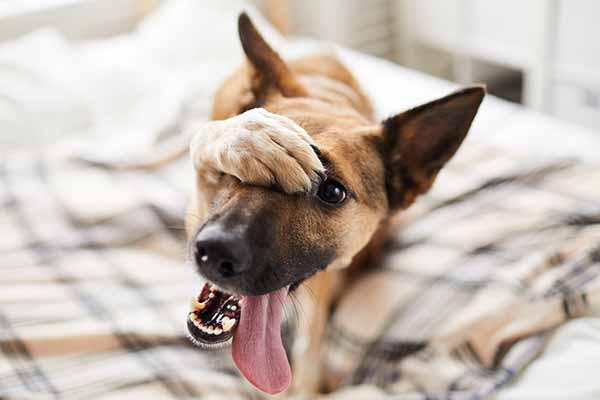
Dog Nose: Dogs are like kids. They have a lot of energy. When they are stuck in the house, they will go restless because of all their unreleased energy. Dogs need to be working.
This dog that you have needs to be working and doing something to use his working ability, and there’s no piece of work that you can do that is more effective with dogs than doing scent work. Teach your dog to use his or her nose. This is what I told my friend who ran the rescue organization. I said, “Does Charles do any scent work?” She said, “No.”
I said, “Here’s the deal. He’s a hound. He was bred to do scent work.” I told her, I said, “This worked with all breeds, but especially if you have a hound, you need to do this, but you can do what I’m going to show you or talk with you about in this session with a Dachshund. You can do it with a Chihuahua. It’ll help you and help your dog. It’ll help settle your dog down and help get your dog focused and help with your dog’s general demeanor because it’s fun.”
Search For Treats
Dogs love to have fun. This is something that is so easy to do. It does not take a boatload of training to do it. It doesn’t take a lot of skill on your part, and you can settle your dog down and begin to see differences in his or her behavior almost right away. Let me tell you what it is. I will tell you where I got it from too. I like to give people credit. It’s one of my pet peeves in my industry. People will go out and just espouse something like they invented it, and you think, “He’s a genius,” and somebody else came up with this so I didn’t make this up.
I will tell you where I got it from. It’s out of a book called A Dog’s Fabulous Sense of Smell. It’s a training book. If you like training books, get it. If you don’t like training books, don’t get it. I will describe it here to you the way that the author describes it. The lady’s name who wrote this book is named Anne Lill Kvam. She’s got a lot of exercises in here, but the one that seems to me to be the easiest one that you can do the quickest that can show a result in your dog is a thing called Search for Treats.
I do this in my backyard with my dog. You can do it in the house, but what it essentially is, is having treats out in your yard and giving your dog a cue, and your dog takes off in the yard and puts her nose down, and she searches the yard to find these treats. You might say, “What’s so impressive about that?” First of all, I have got, for example, a big backyard, and I will go out and toss the treats out of my backyard with no pattern to it.
I stand in a certain area of my yard and I toss the treats in either direction. I go get my dog and I give her a cue, and she hauls out into the backyard and she puts her nose down. She will not stop until she finds all those treats. She will search a huge area. Sometimes she’s out there for 5 or 10 minutes. I haven’t done my whole yard yet. If I did my whole yard, that’s a third of an acre. She could be out there for an hour. I will tell you. She will not stop until she finds the treats. When she’s done, she comes into my house and she lies down. She is relaxed and she’s tired, and my dog has a lot of energy. You know what they say, “A tired dog is a good dog.”
I’m going to run you through the progression that this lady has in her book, and you can get the book if you want and read about it. There are other exercises in there, but let me run you through this and you can get started on this as soon as possible. You can get little training treats that you can use that you can toss out in the backyard or toss around in your house and let your dog go searching. You got yourself a ready-made exercise that can straighten out a lot of energy-related problems that dogs have in our society now when dogs have got to be so polite and they can’t go running loose in the neighborhood for obvious reasons. They don’t get a lot of their energy out. This can help you with that.
Let me go over what you need to do. You start very simply with this and this is a principle in training. You start with a scenario where it’s easy for the dog to learn. You go out. Let’s say you are going to do this in your backyard. You go out with your dog on a leash and let your dog see you take one food treat. toss it in front of the dog in the grass. Do not do any obedience with the dog. Don’t try to correct the dog, make the dog stay, sit, or any discipline. Let the dog see you toss the treat, and then let him go get it.
A principle in dog training is to start simple. Start with a scenario where it's easy for the dog to learn. Click To TweetIt doesn’t matter that he saw. That’s how we want to start it. Let him run and go get it and praise him big time. Get his attention and let him see you toss another treat. He runs over to it in the grass, gets it out of the grass, and eats it up. After you’ve done that 2 or 3 times and he seems to get it, then toss 2 or 3 treats at a time. Let him see you toss them. He runs to go get the treats.
We are not saying anything in terms of a cue. We are not saying find them. This lady recommends that you say treats as a cue, but we are not ready to do that yet. We have got to get a little bit farther into this exercise before we do that. You don’t start tossing these treats a long distance away, maybe 3 or 4 feet away. This is so easy, and that’s what we want. We want the dog to understand.
I go over the grass, I put my nose down, and I get a food treat. After the dog is getting good at that, then you start to increase the number of treats that you toss. Toss 4 or 5, and you are still not tossing them out any distance from you. 4 or 5 feet tops. Let the dog go out and find those treats and praise the dog for finding the treats. This is fun. You’ll see your dog’s tail wag if you are doing this right and you are making a very fun activity for your dog.
Your dog goes out and finds those 4 or 5 treats and it might take you 3, 4, or 5 minutes before you get to that. You start tossing one treat and the dog goes out and gets it, and comes back to you. You might even give the dog a treat when he comes back to you so that he learns to go get a treat and then come back to you. He comes back, you give him another treat, then you show him another treat and toss it out in the grass away from him 3 or 4 feet. He goes out and gets that and then comes back to you.
After he gets good at that, then toss 2 or 3 treats out in the grass, and then after he gets good at that, toss 4 or 5 treats. You are not graduating up to that many treats until you see your dog getting them. He understands. “I’m going to run out there and I’m going to get those treats.” Once you work up to 4 or 5 treats, as he’s on his way to go get the treat is when you want to put the cue on it.
She suggests you say, “Treat.” I use the German word for track. Some people want to use search. I don’t say track because tracking is a different exercise, and I don’t want to get her confused. I also don’t ask her to find it because that’s what I use when I have her go find a scent out in the yard. I have got a little scent tin and I will hide it out in the yard and tell her to find it, and she’ll go find it and sit for it once she finds it.
For this exercise, you could say treat, that would probably be the easiest thing to do. Once we have worked up to where we are tossing 4 or 5 treats out in the grass, as I said, toss them, and then as he heads towards the treats, let him hear you say, “Treat.” Do that 2, 3, or 4 times, and then maybe take a break, and maybe you don’t want to do that anymore that day.
Maybe you want to come back out half an hour later, but just take a break, come back out, and start again. Let him see you toss 4 or 5 treats a little bit further away. You might toss it 6, 7, to 8 feet away from you. As he runs out there to go get him, let him hear you say treat. Once you start to see him get this, then you can start tossing a bunch of treats. Let him see you toss a bunch of treats out there. As he runs out, you say treat, and I think you are going to start to see why this is such a great exercise.
You’ll start to see him searching the area. Nose down in the grass, searching the area, and looking for those food treats. Once you have him where you can toss 5 or 10 treats out there, then what you might do is let him watch you toss handfuls of treats. You don’t want to use too big of a surface area right now, maybe 10 or 20-foot square.
You can have your partner, spouse, significant other, or kids. Hold the dog with the leash while the dog sees you toss the food treat. I live alone, so I have her at my back sliding glass door. She can see me in the yard and I go out in the yard and I toss food treats around, and then I come back and get her. You want to have the dog be restrained in this part of the exercise and see you toss a whole bunch of food treats out in the yard. Now, you can work your way up to where you are tossing handfuls of treats.
When I do it nowadays, there could be 100 treats out there. They are the little tiny training treats. It’s not like she’s getting a huge amount of food, but I do adjust her meal on a day when I do that type of work for her. I go get her and I let her go, and as she’s heading out into the yard, and I promise you, she’s got a boatload of enthusiasm for it because, by this time, she knows the exercise, and your dog will too before you get to that point.
She hears me say the cue word as she’s running out to find the treats. She will go and go until she gets them all, and you can see that tail wagging. The other thing that happens is you start to see your dog settle into the exercise. There’s not so much frantic energy. There’s business-like intent. “I’m going to find those treats.”
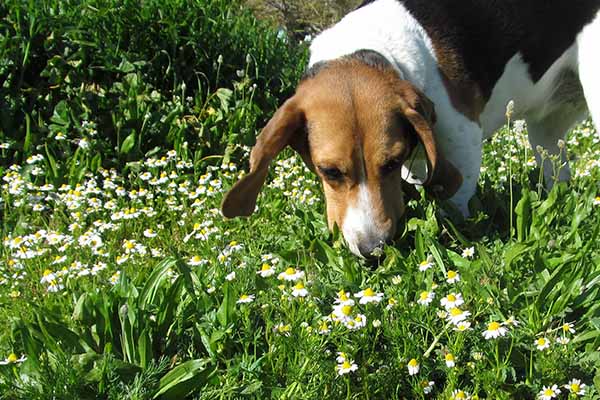
Dog Nose: Routinely doing the “search for treats” exercise will let your dog settle into the exercise. It’s not so much frantic energy but more business-like intent of, “I’m going to find those treats.”
Once your dog has found most of the treats, if not all of them, then you can call your dog back to you and have a food treat in your hand when you do that so you can reward the dog is coming back. How do I know when my dog is found all the treats? You’ll be able to tell. I promise you. You’ll see the dog searching and getting treats at a pretty high rate, and then all of a sudden, the dog’s got to go farther and farther and search longer and longer to find the treat.
You’ll begin to see when the dog is running out of treats, and that’s when you can call your dog back to you and call it a day for that exercise. You’ll start to see your dog enjoy and look forward to this, and you’ll start to see your dog settle down and relax because your dog is being worked. It helps with your dog’s relationship with you. It helps with your dog’s overall personality.
A working dog is a good dog. That’s what they love to do, and it’s almost like you are working in partnership with your dog. You are taking your dog out and you are asking your dog to go find these treats. You are queuing your dog to go find these treats. It’s an exercise that he loves because he’s getting rewarded for it. Every time he finds a treat, that’s something good. There’s enthusiasm for this.
The Importance Of Work
This is the element or this is the purpose of a dog’s life, which is to work to eat and to work in partnership to eat. That’s in your dog’s blood. I have talked about it before in the model of our dogs being descended from wolves and the model of cooperation in a wolf pack. There’s no conflict in a wolf pack. There’s no alpha who lords over the pack with an iron fist. There is a mom, a dad, and the pups. That’s what a wolf pack is.
They know how to work together to accomplish the main goal of a wolf pack, which is to eat and hunt. It’s cooperative teamwork that is in your dog’s blood. What’s behind your dog’s DNA is to work in cooperation as part of a team to accomplish a goal, and there’s nothing more basic than accomplishing the goal of eating. Searching for food calms dogs down and gets them focused.
There's nothing more basic than accomplishing the goal of eating and searching for food. Click To TweetI use an exercise like this to help with aggressive dogs. We’ll talk about that at some later point, but this is a great foundational exercise to help build focus in your dog, relax your dog, help your dog feel fulfilled, get work into your dog, and make your dog a better-adjusted animal. What’s the result of my friend with the rescue organization and the hound Charles who bays constantly and is wound up? Whenever she can do the scent work with Charles, she said he’s a relaxed dog afterward and a whole lot calmer and seemed to be at peace with himself and not wound up and driving himself and everybody around him crazy.
I hope that you can get started with this. This is about the easiest thing that you could do. Don’t try to take it too fast. Make sure your dog knows what the exercise is by letting him see you toss those treats out one at a time first before you start tossing more treats out and then before you start putting a cue on it. Once that starts to happen, then you can toss more and more treats as he sees you do this to find more. When he gets good at it after you’ve done it a bunch of times and he understands what the queue is, you can go out in the yard and toss treats out in the yard and he doesn’t even know you are out there.
You can then bring him out in the backyard and give him the queue and he’ll put his nose down and start to search to backyard until he finds the food treats. That is when we are getting a dog that’s working and using his nose. Remember, your dog’s nose is 10,000 times or more sensitive than ours and this is something that’s in your dog’s blood. It is to use his nose to find his food.
I’m hoping that you can get started on this and let me know how this works for you. I’m hoping that you are going to see what I see with my dog, which is a more relaxed and calm dog who seems to be happier. I hope this has been helpful to you. Go get to work with your dog and get to use his nose, and I will talk with you next time.
Important Links
- The Magic Of Markers – Past episode
- A Dog’s Fabulous Sense of Smell
